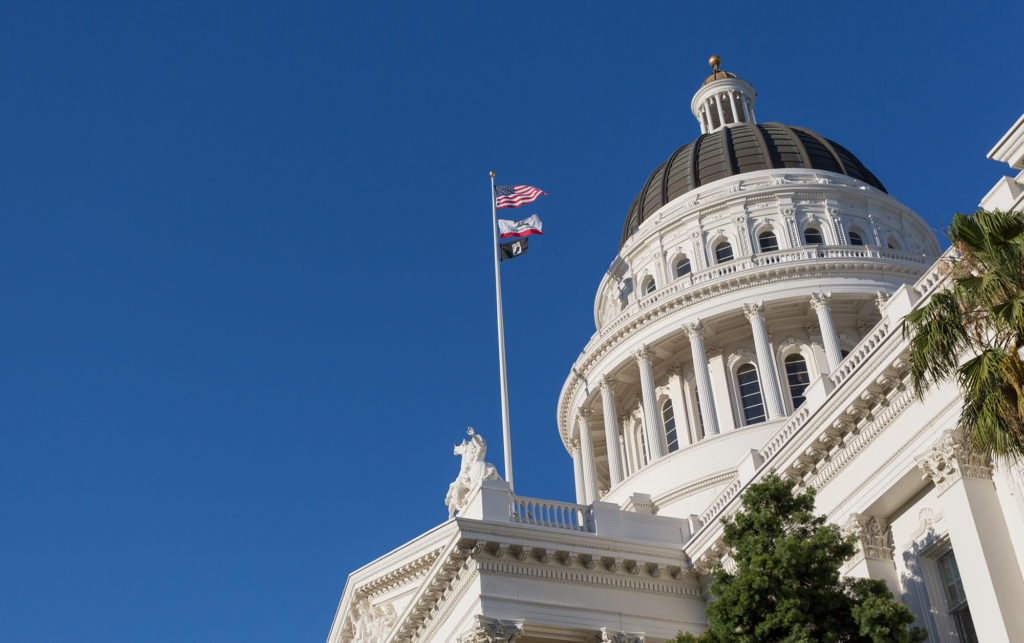
On the final day of June, Gov. Gavin Newsom signed off on a bundle of bills that together make up California’s $308 billion budget for the fiscal year that started July 1.
While much has been said and written about the state’s taxpayer refund aimed at helping Californians offset rising gas prices, the new budget also brings education spending to an all-time high, with increased base funding and block grants to support everything from learning recovery to operational costs.
Here are a few takeaways from the state’s 2022-23 spending plan for public schools.
***
Base funding for TK-12 schools will increase by approximately $9 billion, or 13 percent.
Proceeds from sales and use tax, along with corporate taxes, helped push the state’s cash receipts more than $1 billion over what was previously forecasted. As a result, new revenue has been channeled into the state’s Local Control Funding Formula (LCFF) — that’s the main funding source for schools — and educational block grants.
Along with a statutory Cost-of-Living Adjustment of 6.56 percent, the new budget increases LCFF allocations by another 6.28 percent. Compared with last year, base funding under this model will grow by about $9 billion, or 13 percent.
The state will help ease the fiscal impacts of declining enrollment.
School districts across California have faced significant enrollment challenges as a result of the pandemic and more long-term trends, like soaring home prices and declining birth rates. Because school district funding is based on average daily attendance, or ADA, these conditions have the potential to lead to sudden revenue drops that can significantly disrupt school operations.
To soften the blow, the new budget allows school districts to use their three-year ADA average if it’s higher than the current or prior year. To account for COVID-19 fluctuations, school districts, county offices of education and classroom-based charter schools may also use their 2019-20 attendance percentages if they’re higher than 2020-21.
Home-to-school transportation funding gets a long-anticipated boost.
For years, educational leaders have criticized transportation funding as inadequate. After much discussion, the state will now reimburse school districts and county offices for as much as 60 percent of home-to-school transportation costs, or twice the current average of 30 percent.
In addition to receiving an ongoing funding boost under Proposition 98, $1.5 billion in one-time funding will be used to create a zero-emissions school bus program that prioritizes rural and low-income schools, according to the California School Boards Association.
Each district and county office must develop a plan describing the transportation services offered to students in transitional kindergarten through grade six. Districts and county offices are authorized to partner with municipally-owned transit systems to transport middle and high school students.
The budget provides $7.9 billion in one-time funding for learning recovery programs.
This funding can be invested through the 2027-28 school year and would be distributed based on state formulas that prioritize students with the greatest needs. Funds can be used to expand instructional time with additional days or hours, add programs that accelerate learning, and expand interventions, along with enhancing other supports such as tutoring, early literacy intervention, mental health and counseling services.
Campuses with large percentages of high-needs students will have an opportunity to extend the school day.
California’s Expanded Learning Opportunities Program has been augmented to provide about $4.4 billion to help schools extend school hours and add summer or intersession programs at the K-6 level.
In school districts where high-needs students make up at least 75 percent of the population, per-student allocations of $2,750 would benefit those from low-income households, English learners, foster youth and homeless children. Districts where high-needs students account for less than 75 percent could receive $1,250 per eligible student.
A flexible block grant worth $3.56 billion can fund music, arts, instructional materials and other costs.
While it’s known as the “Arts, Music, and Instructional Materials Discretionary Block Grant,” this block grant comes with a lot of flexibility. Funds, which must be committed by the 2025-26 school year, can be used for standards-aligned professional development, instructional materials, COVID-19 mitigation supplies, school climate strategies and operational costs, including retiree benefit cost increases.
A $500 million investment will create a new college and career pathways program.
With $500 million in competitive grants, the Golden State Pathways Program aims to partner low-income or low-performing school districts with colleges, universities and businesses. The focus, according to EdSource, would be on “careers in health, computer science, education, STEM, and education, including early ed.”
School facilities would receive additional funding.
The 2022-23 state budget includes a total of $4.75 billion that would be allocated over a three-year period for new construction and modernization projects based on formulas spelled out in the state Education Code.
For 2022-23, $1.3 billion will be available from a state bond approved during the 2021-22 fiscal year. The Legislature signaled its intent to appropriate an additional $2.06 billion from the 2023-24 fiscal year and $875 million in the 2024-25 fiscal year.
Separately, the state will set aside $100 million in 2022-23 for transitional kindergarten and pre-kinder facilities grants, and the legislature intends to provide $550 million more for these sites in 2023-24.
For a more detailed look at California’s budget, visit www.ebudget.ca.gov.
